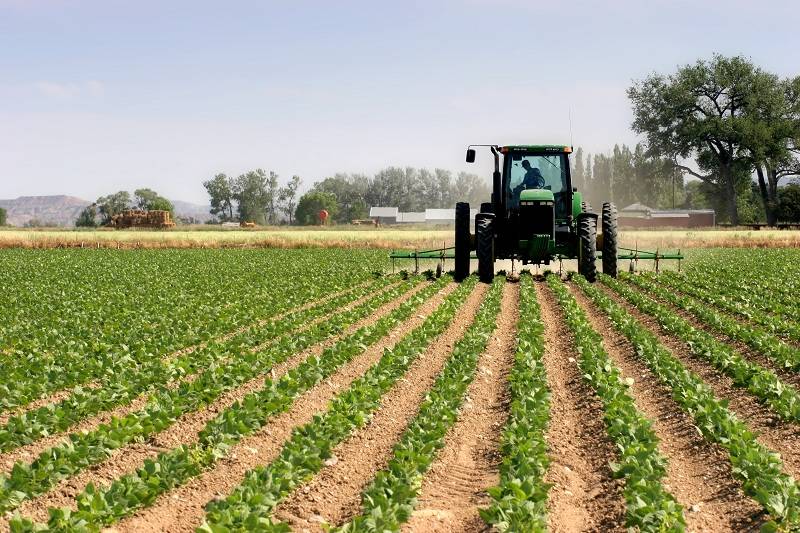In an ideal free market system, the law of supply and demand decide prices and foster competitiveness. However, artificial forces like agricultural subsidies can upset that balance. The US farm bill is a unique ombnibus, multi-year bill which aims to outline the Fed’s overall stance and policies in the agricultural sector. It is also renewed roughly every five years in order to tailor the bill to the political climate of its time. In theory, agricultural subsidies serve to provide a safety net for farmers whose livelihoods depend on unpredictable weather and fluctuating commodity prices. Although this logic seems sound, especially to Keynesian supporters, these subsidies have been accused of overly compensating already well-off farmers and industries.
The farms in the US are no longer the humble small-town family owned establishments, but huge-scale billion dollar corporations, earning its name: agribusiness. Ever wondered why a Big Mac costs more than a salad? Agricultural policies have immense influence over the overall health of American citizens, as they dictate which types of food are cheaply and widely available. Currently, five crops control the subsidy market: corn, cotton, rice, soybeans, and wheat. Unfortunately, these commodities only makes fast-food and processed options more affordable than healthier alternatives like fruits and vegetables. For instance, corn is the most highly subsidized crop in the US, which explains the prevalence of high fructose corn syrup—which is cheaper than sugar—in the ingredients of an average American’s groceries. In addition, these main commodities are produced almost entirely from big agribusinesses. As a result, much of the subsidies are disproportionately fed to the large commercialized farms.
Origins of these powerful players in the agricultural sector goes back to the Nixon Administration. Earl Butz, the Secretary of Agriculture at the time, adapted a “get big or get out” mentality for farmers, focusing his policies on large-scale industrial farming. Butz’s aggressive policies not only fostered the growth of megafarms, but these farms now needed its seed, fertilizer, and pesticide providers to operate on the same large-scale level. As a result, biotech firms also grew to huge corporation to what is Mosanto today, a multi-billion dollar global corporation.
Critics of the bill include small to mid-size farms, health organizations, the World Trade Organization, and the former President George W. Bush, who served in office at the time of the bill’s passage. Bush publicly opposed the legislation, and vetoed it more than once. He believed the bill was too generous for already well-off farmers, and he was right. From 1995-2010, the top 10% of qualifying farmers collected 74% of all subsidy payments. The subsidies are also paid per acre, meaning the largest farms receive the largest checks. In addition, the only cap the bill really imposes is to farmers who make more than $750,000, or $1.5 million for married couples, which means a couple in the upper-echelon of society can still receive federal assistance.
The key actors who run the oligarchy of agribusinesses are Monsanto, ConAgra, and Cargill, and they dominate the farming industry, producing approximately 98% of America’s food supply. Major food manufacturing corporations are also a major special interest group. It is in these corporation’s best interest to keep their commodity crop’s prices low to gain a high profit return. Popular brands like Kraft, Mars, and Coca Cola were also amongst the top spenders in lobbying dollars. Coca-Cola uses high fructose corn syrup as a main ingredient in its sodas, Mars need large doses of sugar to mass produce its famous candy bars, and Kraft needs dairy farms to keep milk prices low.
The agricultural subsidies result in overproduced commodities that are “dumped” to developing countries, and although this may seem like a form of aid, it drives local farmers who can’t compete with the highly subsidized American growers out of business. If the current commodity crops continue to be subsidized and agribusinesses control the market, there will be a continuing trend of higher sales of processed food, proliferation of toxic pesticides, erosion of land, monopolization of market, and etc.
Bill Ayres, Co-Founder and Executive Director of WhyHunger, writes in his Huffpost piece that the 2014 Farm Bill did eliminate billions in farm subsidies, reducing them by 30 percent. Perhaps this is a step in the right direction, but we will have to wait and see if Washington can withstand the army of lobbyists hired by the agricultural elites.
But for now, my college budget has my diet looking like this:

Leave a Reply
You must be logged in to post a comment.